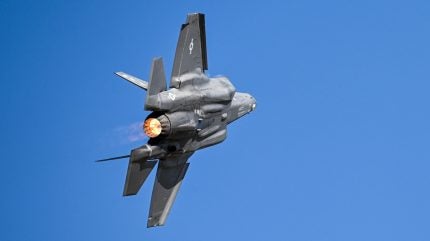
Air forces must confront a tenfold increase in demand for aircraft parts according to General Mark Kelly, former Commander, US Air Combat Command, in an update to a gathering of combat air specialists in Berlin on 5 November 2024.
During the International Fighter Conference, hosted by DefenceiQ, the former US Air Force superior relayed the challenges facing the fighter force, which includes operating across the electromagnetic spectrum, forming layered air defences, and overcoming a major sustainment problem at a time of global insecurity.
It is believed that the US and its allies ought to be ready for war before the end of the decade. Russia’s brutal invasion now puts Ukraine on the backfoot while China surpasses American military might.
While the US Armed Forces are making efforts to reshape its doctrine for peer-on-peer conflict, based on its proven Cold War experiences, strategic competition also leans on a thriving industrial base at home.
It is in this area that China has far outpaced the US, with Beijing investing in munitions and acquiring weapons systems five to six times faster, according to analysis from the Washington security think tank, the Center for Strategic and International Studies.
While the People’s Liberation Army Air Force (PLAAF) continue to expand its capabilities in key areas, the US is struggling to keep its own tactical aircraft mission-capable. The US Government Accountability Office found that the rate at which fighter planes are flying in service is far less than is required across all the services despite spending up to $57bn in sustainment between 2018 and 2023.
Naturally, this calls into question the apparent deficit at a time when the military ought to perform optimally to prevent global security from backsliding.
The misfortunes of Boeing, a once reliable US aerospace prime, also demonstrate the industrial qualms at home. The old giant reported a net loss of $6.17bn for the third quarter ending 30 September 2024.
Prior to this, the company’s $8bn acquisition of an old, reliable Wichita supplier, Spirit Aerosystems, in the weeks after Boeing’s commercial woes earlier this year suggests a strategic pivot to address trust in its aircraft portfolio.
The decision subsequently spurred uncertainty in US defence circles, where some were concerned that Spirit’s defence commitments may be sidelined for its commercial restructuring.
What about Europe?
As the sole tier one partner to the US-led F-35 programme, the UK is struggling to exceed 37 F-35Bs before the end of this year; the British military currently operate 34 units.
This is an insufficient level of fighter aircraft for its two Queen Elizabeth-class aircraft carriers – one of which, HMS Prince of Wales, is due to set off on a carrier strike group to the Indo-Pacific in 2025 during which the force will be bolstered by Norwegian naval assets.
Nevertheless, Britain has been closely aligned with the F-35 programme and has a commitment to acquire at least 74 of the aircraft, although this figure has dipped significantly from the 138 airframes set as the initial upper limit.
Moreover, the UK Budget at the end of October offered no detrimental change in defence spending – a key requirement needed to address the volatile security environment Britain must confront in the coming years.
In contrast, China recently conducted a dual carrier exercise with the Liaoning and Shandong performing flight operations within a single CSG. The Liaoning is shown with just two J-15 fighters on its flight deck, indicating that the 12 airborne J-15 fighters seen in released imagery were operated from the carrier. Though, the total number of fixed-wing and rotary aircraft in the force is believed to be as a high as 40 units.
Towards Eastern Europe, air power sustainment continues to grow at some pace where the Russian threat perception is acute. Recently, the US State Department approved a potential foreign military sale to Poland for the F-16 Viper mid-life upgrade valued at more than $7bn (€6.5bn).



